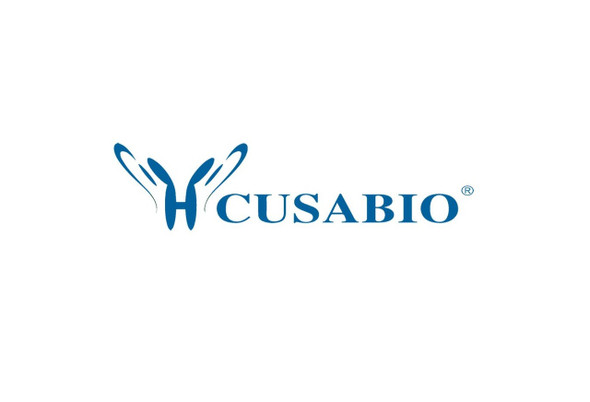Cusabio Human Recombinants
Recombinant Human Fanconi anemia group C protein (FANCC) | CSB-EP008415HU
- SKU:
- CSB-EP008415HU
- Availability:
- 3 - 7 Working Days
Description
Recombinant Human Fanconi anemia group C protein (FANCC) | CSB-EP008415HU | Cusabio
Alternative Name(s): bA80I15.1; FA 3; FA3; FAC; FACC; FANCC; FANCC_HUMAN; Fanconi anemia complementation group C; Fanconi anemia complementation group C protein; Fanconi anemia group C protein; Fanconi pancytopenia type 3; FLJ14675; Protein FACC
Gene Names: FANCC
Research Areas: Epigenetics and Nuclear Signaling
Organism: Homo sapiens (Human)
AA Sequence: MAQDSVDLSCDYQFWMQKLSVWDQASTLETQQDTCLHVAQFQEFLRKMYEALKEMDSNTVIERFPTIGQLLAKACWNPFILAYDESQKILIWCLCCLINKEPQNSGQSKLNSWIQGVLSHILSALRFDKEVALFTQGLGYAPIDYYPGLLKNMVLSLASELRENHLNGFNTQRRMAPERVASLSRVCVPLITLTDVDPLVEALLICHGREPQEILQPEFFEAVNEAILLKKISLPMSAVVCLWLRHLPSLEKAMLHLFEKLISSERNCLRRIECFIKDSSLPQAACHPAIFRVVDEMFRCALLETDGALEIIATIQVFTQCFVEALEKASKQLRFALKTYFPYTSPSLAMVLLQDPQDIPRGHWLQTLKHISELLREAVEDQTHGSCGGPFESWFLFIHFGGWAEMVAEQLLMSAAEPPTALLWLLAFYYGPRDGRQQRAQTMVQVKAVLGHLLAMSRSSSLSAQDLQTVAGQGTDTDLRAPAQQLIRHLLLNFLLWAPGGHTIAWDVITLMAHTAEITHEIIGFLDQTLYRWNRLGIESPRSEKLARELLKELRTQV
Source: E.coli
Tag Info: N-terminal 6xHis-SUMO-tagged
Expression Region: 1-558aa
Sequence Info: Full Length
MW: 79.4 kDa
Purity: Greater than 90% as determined by SDS-PAGE.
Relevance: DNA repair protein that may operate in a postreplication repair or a cell cycle checkpoint function. May be implicated in interstrand DNA cross-link repair and in the maintenance of normal chromosome stability. Upon IFNG induction, may facilitate STAT1 activation by recruiting STAT1 to IFNGR1.
Reference: NIEHS SNPs programDNA sequence and analysis of human chromosome 9.Humphray S.J., Oliver K., Hunt A.R., Plumb R.W., Loveland J.E., Howe K.L., Andrews T.D., Searle S., Hunt S.E., Scott C.E., Jones M.C., Ainscough R., Almeida J.P., Ambrose K.D., Ashwell R.I.S., Babbage A.K., Babbage S., Bagguley C.L. , Bailey J., Banerjee R., Barker D.J., Barlow K.F., Bates K., Beasley H., Beasley O., Bird C.P., Bray-Allen S., Brown A.J., Brown J.Y., Burford D., Burrill W., Burton J., Carder C., Carter N.P., Chapman J.C., Chen Y., Clarke G., Clark S.Y., Clee C.M., Clegg S., Collier R.E., Corby N., Crosier M., Cummings A.T., Davies J., Dhami P., Dunn M., Dutta I., Dyer L.W., Earthrowl M.E., Faulkner L., Fleming C.J., Frankish A., Frankland J.A., French L., Fricker D.G., Garner P., Garnett J., Ghori J., Gilbert J.G.R., Glison C., Grafham D.V., Gribble S., Griffiths C., Griffiths-Jones S., Grocock R., Guy J., Hall R.E., Hammond S., Harley J.L., Harrison E.S.I., Hart E.A., Heath P.D., Henderson C.D., Hopkins B.L., Howard P.J., Howden P.J., Huckle E., Johnson C., Johnson D., Joy A.A., Kay M., Keenan S., Kershaw J.K., Kimberley A.M., King A., Knights A., Laird G.K., Langford C., Lawlor S., Leongamornlert D.A., Leversha M., Lloyd C., Lloyd D.M., Lovell J., Martin S., Mashreghi-Mohammadi M., Matthews L., McLaren S., McLay K.E., McMurray A., Milne S., Nickerson T., Nisbett J., Nordsiek G., Pearce A.V., Peck A.I., Porter K.M., Pandian R., Pelan S., Phillimore B., Povey S., Ramsey Y., Rand V., Scharfe M., Sehra H.K., Shownkeen R., Sims S.K., Skuce C.D., Smith M., Steward C.A., Swarbreck D., Sycamore N., Tester J., Thorpe A., Tracey A., Tromans A., Thomas D.W., Wall M., Wallis J.M., West A.P., Whitehead S.L., Willey D.L., Williams S.A., Wilming L., Wray P.W., Young L., Ashurst J.L., Coulson A., Blocker H., Durbin R.M., Sulston J.E., Hubbard T., Jackson M.J., Bentley D.R., Beck S., Rogers J., Dunham I.Nature 429:369-374(2004)
Storage: The shelf life is related to many factors, storage state, buffer ingredients, storage temperature and the stability of the protein itself. Generally, the shelf life of liquid form is 6 months at -20?/-80?. The shelf life of lyophilized form is 12 months at -20?/-80?.
Notes: Repeated freezing and thawing is not recommended. Store working aliquots at 4? for up to one week.
Function: DNA repair protein that may operate in a postreplication repair or a cell cycle checkpoint function. May be implicated in interstrand DNA cross-link repair and in the maintenance of normal chromosome stability. Upon IFNG induction, may facilitate STAT1 activation by recruiting STAT1 to IFNGR1.
Involvement in disease: Fanconi anemia complementation group C (FANCC)
Subcellular Location: Nucleus, Cytoplasm
Protein Families:
Tissue Specificity: Ubiquitous.
Paythway:
Form: Liquid or Lyophilized powder
Buffer: If the delivery form is liquid, the default storage buffer is Tris/PBS-based buffer, 5%-50% glycerol. If the delivery form is lyophilized powder, the buffer before lyophilization is Tris/PBS-based buffer, 6% Trehalose, pH 8.0.
Reconstitution: We recommend that this vial be briefly centrifuged prior to opening to bring the contents to the bottom. Please reconstitute protein in deionized sterile water to a concentration of 0.1-1.0 mg/mL.We recommend to add 5-50% of glycerol (final concentration) and aliquot for long-term storage at -20?/-80?. Our default final concentration of glycerol is 50%. Customers could use it as reference.
Uniprot ID: Q00597
HGNC Database Link: HGNC
UniGene Database Link: UniGene
KEGG Database Link: KEGG
STRING Database Link: STRING
OMIM Database Link: OMIM









